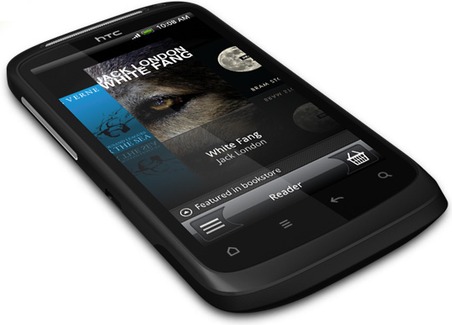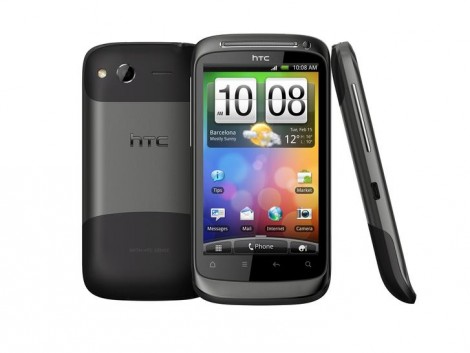HTC have a earned a reputation in the mobile industry as building phones of outstanding quality. Recently we had the opportunity to play around with the Desire S and see if it lives up to that standard.
The original Desire was like the showcase product from HTC and was one of their biggest sellers of 2010. It bared a high resemblance to the Google branded Nexus One. HTC had a few tricks up sleeves for the successor, the Desire S shows off Android 2.3.3 (Gingerbread) and has far more of a refined look, with the gorgeous aluminium Unibody design.
The first thing you notice when you pick up a Desire S is that it feels well-made. The build quality was quite obviously a high priority.
 Let’s take a look at the hardware itself:
Let’s take a look at the hardware itself:
A microUSB charger is pretty standard for mobile phones these days (and could possibly because industry standard by law in the EU). But I do find it odd that companies place charger sockets on the side and top of mobiles. With the Desire S the microUSB slot is on the side. If it were on the bottom, it’d be a lot easier for the phone to slot onto a dock.
It’s nice to see a front facing camera on the device, along with the now seemingly customary 5mp/720p camera and LED flash combo on the back.
The screen is 3.7-inch with a crisp resolution of 480 x 800px. Backed by a 1Ghz processor and 768mb ram.
It’s also worth noting that the radio supports 14.4Mbps HSDPA 3G broadband and 802.11n Wi-Fi. So you’ll be getting the top speeds available in the UK, whether via your mobile network or a Wi-Fi connection.
 Of course, the hardware is very impressive, but the Desire S was one of the first models to show off the much anticipated Android Gingerbread, and it fairs well! The Desire S runs extremely fast and smooth.
Of course, the hardware is very impressive, but the Desire S was one of the first models to show off the much anticipated Android Gingerbread, and it fairs well! The Desire S runs extremely fast and smooth.
HTC add their own touch to the Android OS, with HTC Sense. Sense provides a whole host of features to improve the user experience, over the default ‘vanilla’ Android OS, including for example Friend Stream, a widget that gathers the latest updates from your social networks. Pulling in the latest tweets and facebook statuses from your friends, into a single easily-readable feed.
Another nice touch is the ‘Quick Settings’ menu. This is a drop-down (or pull-down, rather) from the top notification bar that allows a user to quickly enable or disable wifi, bluetooth, network, gps, tethering hotspots, rather than loading up and finding them in the Settings menu system.
Gmail and Google Maps integration are second-to-none in Android Gingerbread. From wireless contact/calendar syncing, to directional geo-location directions. You just can’t replicate that experience on any other mobile operating system currently on the market.
When plugging the device into the USB port of a computer, the phone displays multiple options, asking what you’re intending to do next: Charge, Sync, Mount, Tether, Internet pass-through. Frankly, this little addition makes life a lot simpler, especially when it comes to tethering and syncing data.
Tethering itself is often an understated feature, but since HTC include the option in all of their latest handsets it’s important to note that setup is extremely clear and you can be using your 3G signal as a broadband connection in moments.
Overall we found the Desire S to be a fantastic piece of tech, both the hardware and software live up to high standards HTC have become renowned for. If you’re in the market for a new Android phone, we can’t recommend it highly enough.
The Salsa is HTC’s next big smartphone release, stay tuned for more information or check out Broadband Genie’s preview of the best HTC salsa deals here.

















